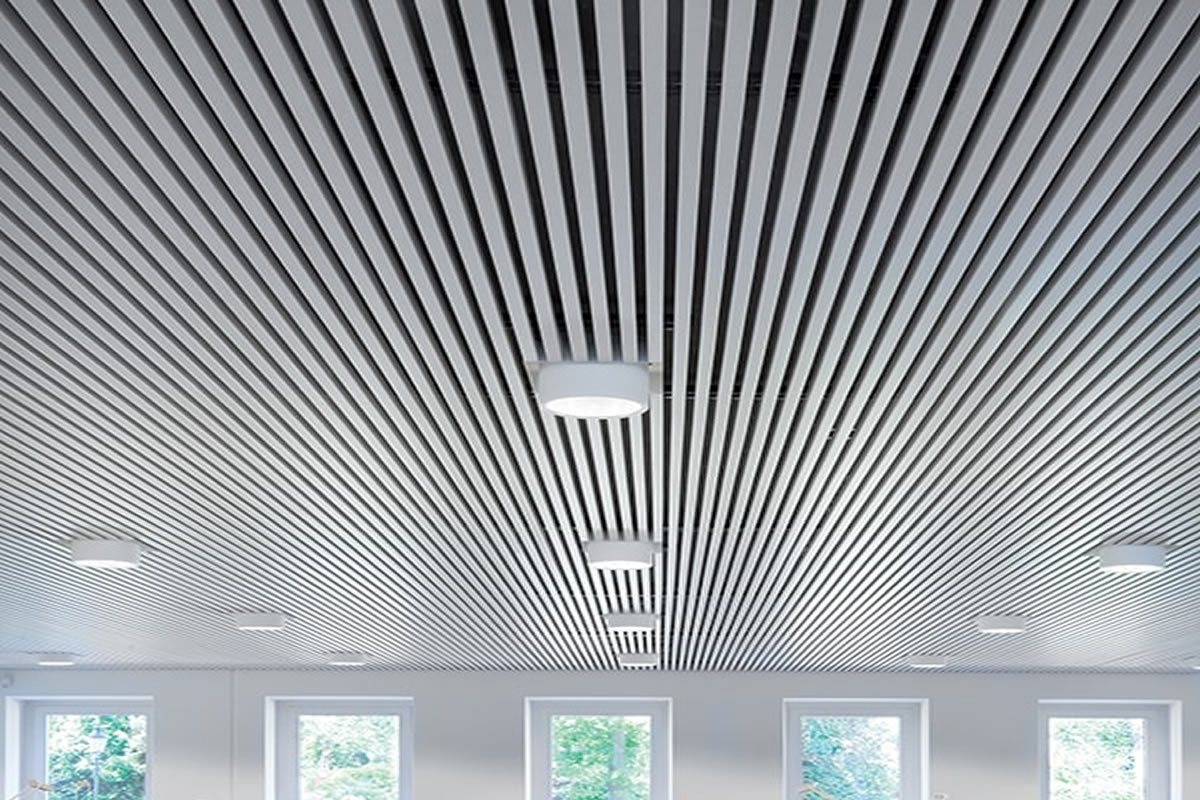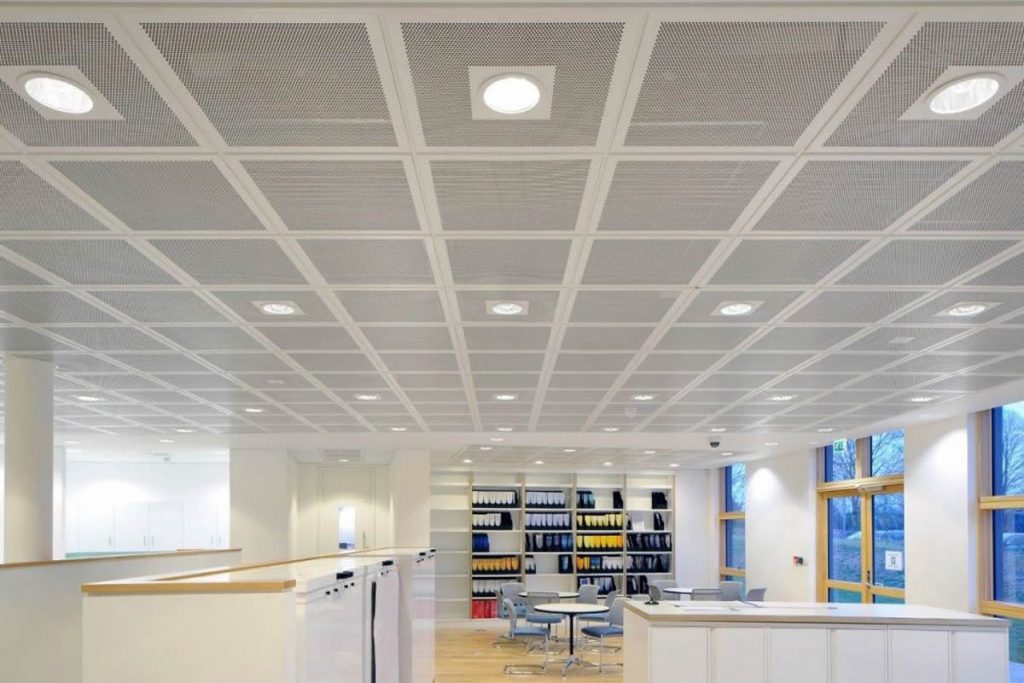In design and building engineering, a floor plan architecture is often referred to as a drawing that shows the connection

The ceiling is the inner surface of the building roof which adds aesthetic to the room. Among various styles of ceilings exposed & suspended ceilings are more popular and well-received.
Ceilings offer an area to accommodate mechanical, electrical and plumbing (MEP) installations. They’re helpful areas to house speakers, lighting fixtures as well as smoke detectors and/or automatic sprinklers.
Exposed ceilings are also referred to as open ceilings or open plenums. In this ceiling type, all the structural and MEP systems are exposed, either with their traditional colors or painted. Open ceilings are gaining interest all most all trades: this style provides an industrial look while creating a more spacious appearance due to the additional height of the room.

Increased natural lighting with skylights: This is particularly outstanding if your building faces south since this building orientation receives the most amount of daylight within the hemisphere.
Modern interior styles: AN exposed ceiling allows for more creative thinking with custom lighting and piping fixtures. Mechanical and electrical installations will become ornamental components, and not solely distribution systems.
Extra space: a conventional closed ceiling usually makes an area appear much smaller than it really is, whereas an exposed ceiling provides that additional space. Having exposed ceilings provides additional airflow helping to make rooms cooler – particularly in areas with warmer climates.
A vigilant wise design is a must if you choose exposed ceiling. Poorly designed ceilings can develop problems with acoustics and MEP installations.
The “unfinished” look of an exposed ceiling actually asks for much more labor and time and effort. Exposed ceilings lack few tasks needed in suspended ceilings; however, this process does not decrease the labor work. In existing buildings with suspended ceilings, the ductwork and plumbing network are typically dirty and do not need to be aesthetically pleasing, When exposed, considering the amount of effort is required to achieve a pleasant “exposed” look. In addition, ducts and pipes have to be painted for exposed ceilings, which need more skilled labor time and effort.
Higher labor costs: utilizing more time and effort of skilled labor to ensure creating pleasant workmanship adds up to the final cost. Shortage of qualified crew in active markets like NYC or LA can make open ceilings a less preferable option. Although fewer materials than suspended ceilings are needed in exposed design, however, these savings typically offset by the labor-costs required for an open plenum.
Sound considerations: Exposed ceilings need sound mitigation consideration in the design since they lack the sound-absorbing element of suspended ceiling tiles. Surfaces in exposed ceilings typically produce an echo chamber, requiring solutions like spray-on acoustic materials.
Exposed ceilings will increase energy expenses: Since exposed ceilings have a lower material cost, they’re less effective as a barrier against heat transfer. This ends up in accumulated summer heat gain and winter heat loss, driving up HVAC prices.
Demanding maintenance: Exposed ceilings need frequent improvement and repainting, which isn’t necessary with suspended ceilings. Overall, suspended ceilings have additional cost effects.
Exposed ceilings will produce an aesthetic atmosphere in buildings, resulting in a productive and appealing house for workers and tenants. However, meticulous workmanship is critical to maintaining sensible performance and pleasant conditions. It’s generally assumed that an exposed ceiling has less labor effort and cost effect than a suspended ceiling, however, the truth is usually quite totally different.
Suspended ceilings are typically considered as false ceilings. As their name implies, they’re suspended from the higher structure, typically a roof or CMU or concrete support. This creates an area between the bottom of the structure and the surface of the ceiling.

Suspended ceilings are decorated from brackets mounted to the bottom of the roof or concrete. These brackets support a series of interlocking metal sections, forming a grid or beam system holding the panels. These tiles can be easily removed to access the ducts and pipes above.
Concealing ductwork, pipes, and wires: rather than playing pricey repairs and painting, suspended ceilings will conceal visual imperfections that don’t have an effect on the performance of MEP installations. this kind of ceiling permits quick access to the systems for maintenance – merely move away a panel to perform repairs, and place it back once finished.
Easy and fast installations: Suspended ceilings will be simply put in at offices and/or houses. In businesses, wherever the smallest interruption work process has a considerable effect, a suspended ceiling will be completed quickly by skilled installers with no interruption.
Soundproofing: Suspended ceilings with fiberglass can block exterior sounds. Contrary to drywall or gypsum board ceilings, suspended ceilings offer improved acoustic qualities, thus noises from higher floors are significantly reduced.
Easy installation of electrical components: lighting fixtures, air vents, and different appliances will be simply put in between the ceiling panels. Several lighting fixtures are sized to suit the slot of a panel – usually two’ x 2’ or 2 ’x 4’.
Fireproofing: Fire resistant suspended ceilings offer up to at least one hour of protection additional fire barriers can be installed above the panels, permitting for more safe evacuation.
Insulation: A suspended ceiling provides insulation thus reducing conditioned areas. Energy bills will decrease, since the living area being heated or cooled becomes smaller.
However, like in any construction solution, suspended ceilings also have their limitations.
Space loss: an obvious disadvantage of suspended ceilings is reducing the indoor height by some inches or feet. As a consequence, areas will feel smaller to occupants.
A suspended ceiling will hide building issues: once shopping for or dealing with a property with suspended ceilings, confirm to examine the installations lined by them. take away panels and examine the area, to confirm there aren’t any structural deficiencies or broken MEP parts.
Deterioration: Suspended ceilings tend to sag and show signs of discoloration over time. Thus, frequent maintenance is needed to maximize its service life.
An exposed ceiling uses fewer materials whereas increasing the indoor area, and its industrial look is also favored by architects in some applications. However, exposed ceilings need skilled labor and careful workmanship and maintenance, and tend to extend HVAC expenses.
Suspended ceilings hide MEP installations, and their look and their appearance is no issue of concern as long as they operate properly. Whereas the material costs of a suspended ceiling are higher, it brings labor and maintenance savings. HVAC systems more efficient due to the additional layer of insulation since the unwanted heat transfer across the ceiling is reduced.
Great post, love the content! However, I would be more cautious when pulling the duct throught the metal box because it could have cut the duct resulting in mold in the ceiling.
I found it helpful when this article explained that one of the advantages of suspended ceilings is that they can block outside noise. It seems like a theater or a playhouse would want to have suspended ceilings so that you can only hear what is being said on the stage. In a theater, you want to make sure that sound travels as much as possible so that everyone in the audience can hear what is going on.